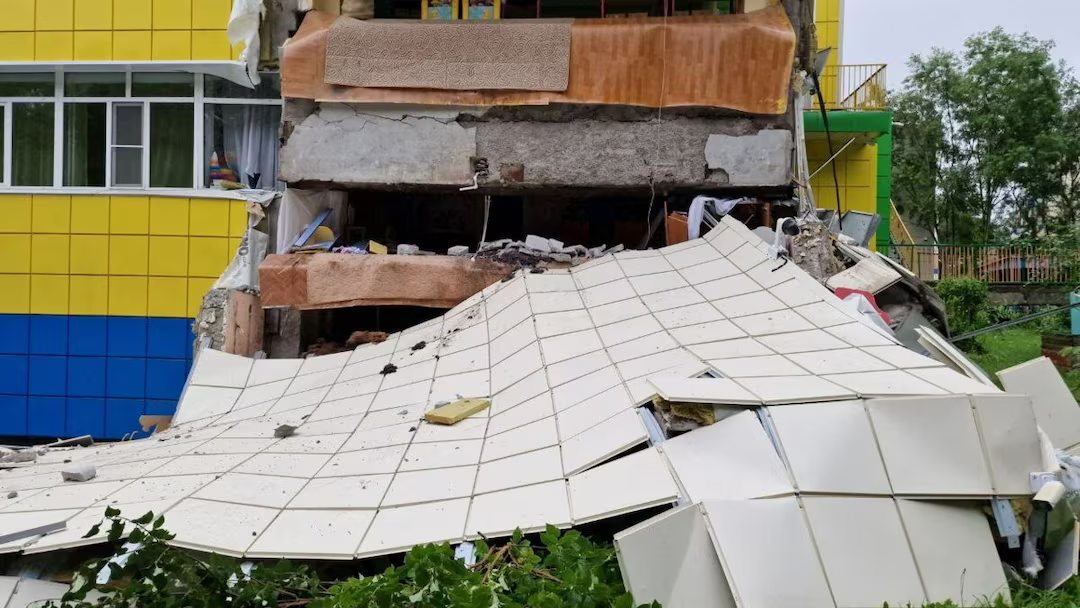A massive 8.8-magnitude earthquake struck off Russia’s far eastern coast, triggering tsunami warnings across the Pacific — from Hawaii and Alaska to the coastlines of Asia and South America.
The earthquake is tied for the sixth most powerful ever recorded, and the strongest since Japan’s catastrophic 9.0-magnitude quake in 2011 that unleashed a deadly tsunami.
Where Did the Earthquake Strike?
While the first tsunami waves have begun reaching some regions with less severity than forecast, experts warn the threat is far from over, waves can arrive hours after the initial quake, and their impact varies dramatically depending on geography.
According to the US Geological Survey (USGS), the earthquake’s epicenter was located 74 miles (119 kilometers) southeast of Petropavlovsk-Kamchatsky, on the Kamchatka Peninsula in eastern Russia, at a depth of 20.7 kilometers.
Who’s on Alert?
The quake has triggered tsunami warnings and advisories across a wide swath of the Pacific:
- Tsunami Warnings (most severe level):
- Hawaii
- California coast from Cape Mendocino to the Oregon border
- Alaska’s Aleutian Islands, from Samalga Pass to Attu
- Tsunami Advisories (moderate level):
- Rest of the US West Coast
- British Columbia, Canada
- Other parts of Alaska
- Additional Alerts:
- Japan, Russia, Ecuador, Peru, Chile, Mexico, and Central American countries up to Panama
- US territories including Guam, the Northern Mariana Islands, and American Samoa
Ecuador’s Galapagos Islands may face waves up to 1.4 meters (4.6 feet), while waves above 3 meters (nearly 10 feet) are possible in parts of Russia, Hawaii, and Ecuador, according to the US National Weather Service.
What’s Happening in Hawaii?
Hawaii is bracing for potential impact within hours. Sirens echoed across Honolulu as officials urged residents in low-lying coastal areas to evacuate to higher ground. Emergency shelters have opened on Oahu, Kauai, and Maui.
“We need people to stay calm but also to act accordingly,” said Honolulu Mayor Rick Blangiardi.
Governor Josh Green also called for immediate evacuations from coastal zones.
First Waves Reach Japan, Russia, and Alaska
Initial tsunami waves have already reached coastal areas of Japan, Russia, and Alaska, but only minor damage has been reported so far.
- Japan’s Hokkaido island recorded waves up to 60 centimeters (2 feet). Sirens were heard, and nearly 2 million people were urged to move to safer ground.
- Video footage shows people sheltering on rooftops as tsunami alerts sounded across eastern Japan.
- Russia’s Severo-Kurilsk district declared a state of emergency after waves tore boats from moorings and displaced storage containers.
- A wave 3–4 meters high was reported in Yelizovo District, Kamchatka.
- In the US, only a 1-foot tidal rise was recorded at Amchitka Island, Alaska, so far.
Although early wave reports suggest lower-than-expected impact, tsunami activity is still ongoing. Experts caution that subsequent waves can be larger and more damaging. Authorities are urging people to stay away from coastlines, even if the first waves seem minor.
This is a developing story. Emergency services and weather agencies across the Pacific Rim are continuing to monitor the situation and will provide updates as new data becomes available.






